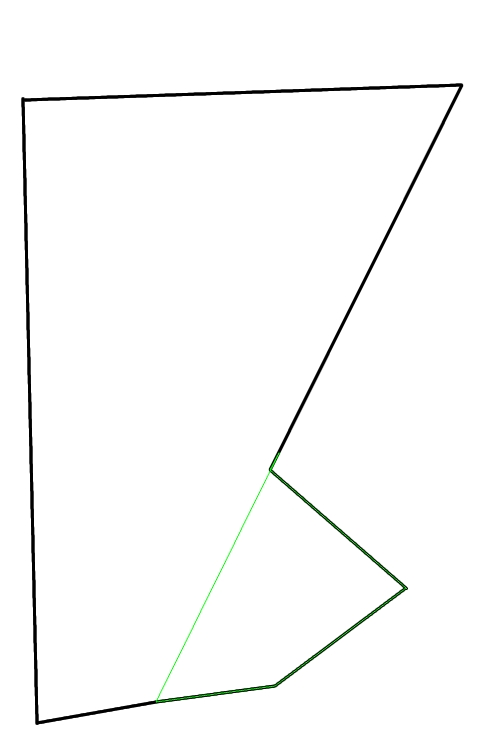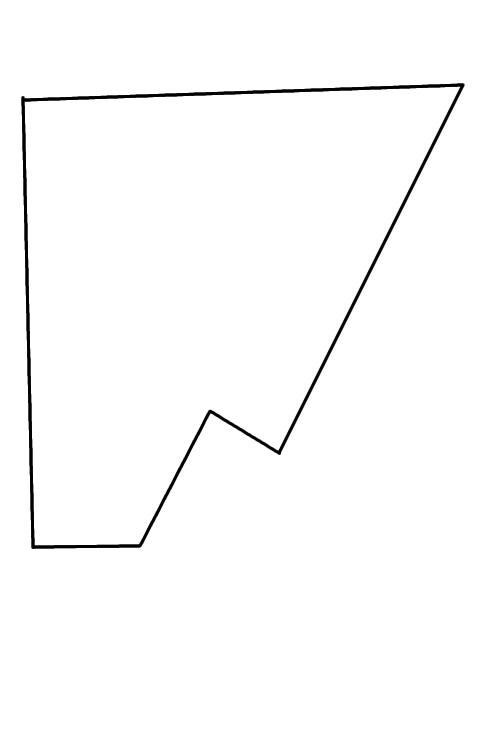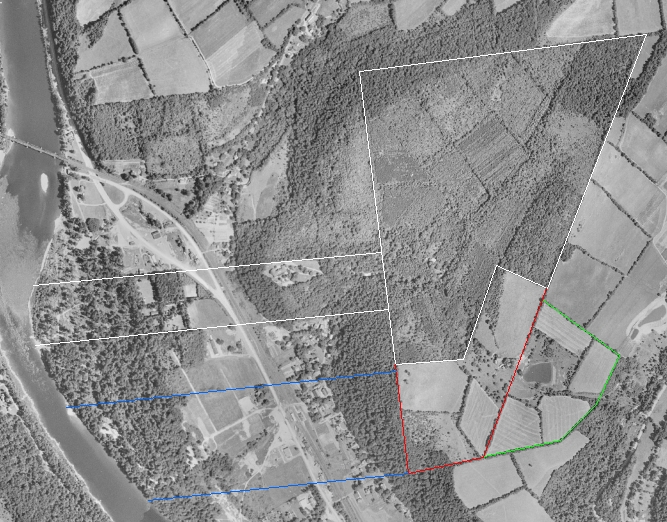| Estate of Henry Albertson to Jacob D. Addis | Jacob D. Addis to William F. Albertson |
| Date: March 14, 1855 | Date: April 3, 1855 |
| Price: $9847.85 for 197.73 acres, $49.80 per acre | Price: $6762.47 for 133.93 acres, $50.49 per acre |
| Butted and bounded: Beginning at a set stone corner of Allen and Hutchinsons land, thence 1. N80E 43.811, thence 2. S26.5W 41.13, thence 3. S26.5W 1.93, thence 4. S49E 18.05, thence 5. S53W 16.36, thence 6. S82.25W 12.00, thence 7. S80W 12.11, thence 8. N1.25W 62.50 to the place of beginning Containing 197.75 acres 1 This is a transcription error. Both deeds obviously used the same survey. They were copied by hand into the county deed book. Mistakes happen. Exception (a piece of the whole getting special treatment): 1-4 same as lines 3-6 above, thence 5. on a straight line 25.94 to the place of beginning Containing 27.43 acres |
Butted and bounded: Beginning at a set stone corner of Allen and Hutchinsons land, thence 1. N88E 43.81, thence 2. S26.5W 41.13, thence 3. N59.5W 8.05, thence 4. S27.5W 15.23, thence 5. S89.25W 10.70, thence 6. N1.25W 45.00 to the place of beginning Containing 133.93 acres |
Sketch of the property (Exception in green): |
Sketch of the property: |
 The property lines in these 2 deeds from 1855 were still in use in 1956. The area of the "exception" in the deed to Jacob Addis, belonging at the time to the heirs of John Cummins, is outlined in green. The area outlined in red is land that was part of Henry's estate that did not end up with William F. Albertson. In 1922, William's daughter Sarah, 80 years old and childless, donated the remaining 134 acres on the mountain top to the Episcopal Diocese of Newark. At the same time, his niece Ellen Cummins donated the 50 acre band reaching to the river. The combined property, outlined in white, was operated by the Diocese as
The property lines in these 2 deeds from 1855 were still in use in 1956. The area of the "exception" in the deed to Jacob Addis, belonging at the time to the heirs of John Cummins, is outlined in green. The area outlined in red is land that was part of Henry's estate that did not end up with William F. Albertson. In 1922, William's daughter Sarah, 80 years old and childless, donated the remaining 134 acres on the mountain top to the Episcopal Diocese of Newark. At the same time, his niece Ellen Cummins donated the 50 acre band reaching to the river. The combined property, outlined in white, was operated by the Diocese as